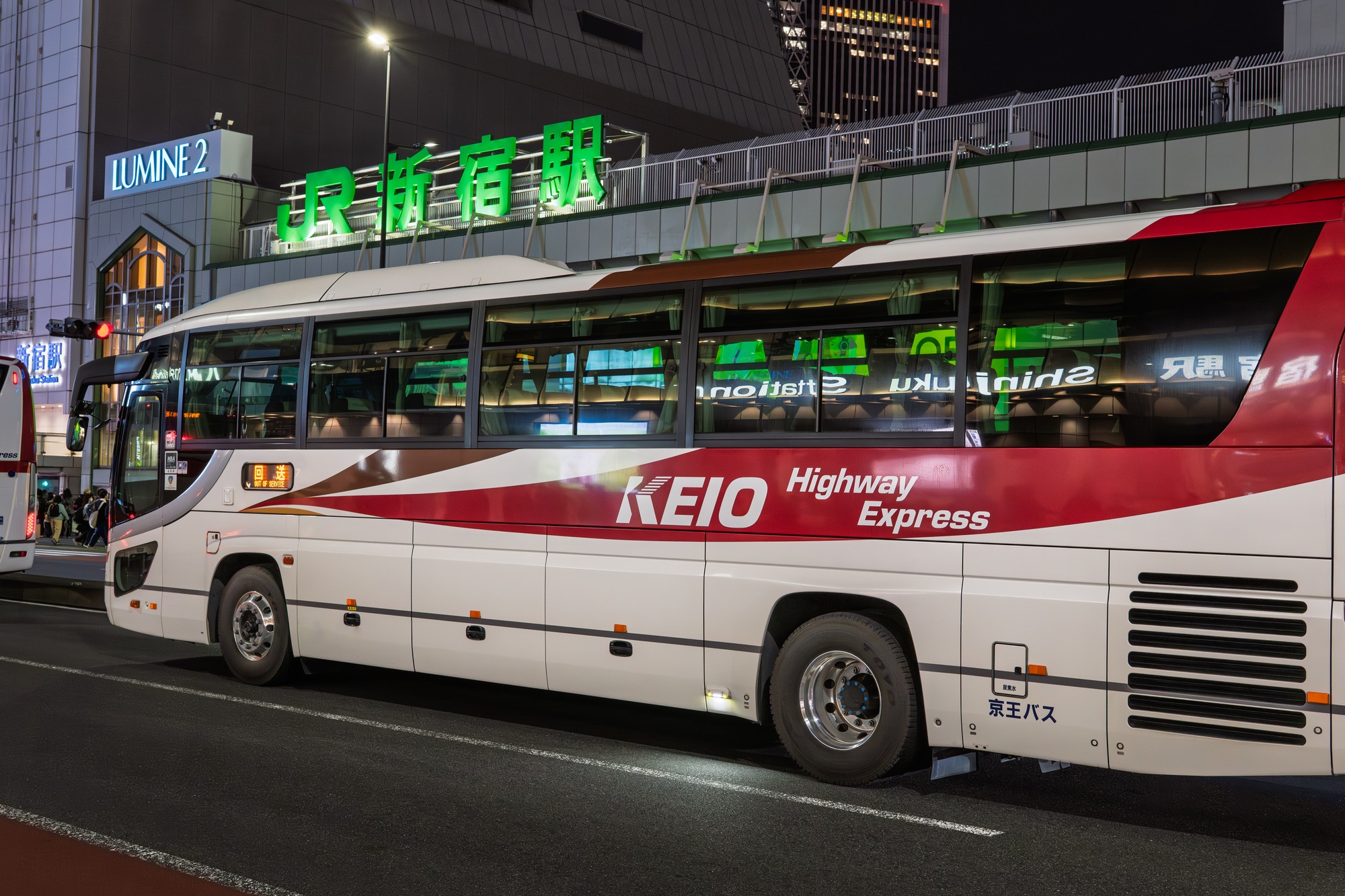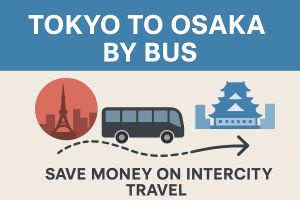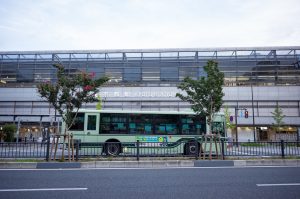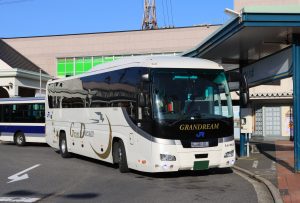Many budget travelers in Japan opt for overnight highway buses (夜行バス yakō basu) to cover long distances while saving on accommodation. An overnight bus lets you travel while you sleep – for example, instead of spending daytime on a train from Tokyo to Osaka (about 8 hours by bus), you can ride through the night and arrive in the morning. These highway buses are generally safe, large, and comfortable, with reclining seats and amenities like onboard toilets and Wi-Fi, so you can arrive relatively refreshed and ready to explore. This guide will provide friendly tips on selecting the right bus, packing essentials, and getting good rest onboard for a smooth night bus journey across Japan.
Why Take an Overnight Bus in Japan?
Overnight buses offer both time and cost efficiency. By traveling at night, you free up your daytime for sightseeing. You also save the cost of a hotel for that night, which is a big draw for budget-conscious travelers. In fact, Japan’s bullet train (Shinkansen) is famously fast but has become quite expensive after recent price hikes. For instance, a one-way Shinkansen ticket from Tokyo to Osaka can cost around ¥14,000, whereas an overnight highway bus on the same route might be roughly ¥5,000. That’s a huge savings, and you’re not “losing” daytime to transit since you’ll be asleep.
Another advantage is that night buses often arrive right in city centers or other key locations. Major routes like Tokyo to Osaka will drop you off in central areas (such as Osaka Station or nearby) around 6–7 AM, so you can start your day immediately. One traveler noted that their bus from Shinjuku arrived at Universal Studios Japan by ~8:30 AM, letting them be first in line at the park after a decent sleep on the bus. In short, if you can get comfortable, overnight buses in Japan are a convenient, budget-friendly way to maximize your travel time.
Choosing the Right Overnight Bus
Not all night buses are the same – it pays to select the right bus type and seat for a comfortable journey. When browsing options, you’ll typically see different seating layouts and service levels:
- Standard 4-seat rows (2-2 layout): The cheapest overnight buses have four seats per row (two seats on each side of the aisle). These are a bit like regular intercity coaches – comfortable enough but with less space per passenger. If you don’t mind getting cozy next to a neighbor, this is the most budget-friendly choice.
- Premium 3-seat rows (1-1-1 layout or 2-1 layout): Many overnight buses in Japan offer configurations with only three seats per row (either one on each side and one in the middle, or a mix of double and single seats). Fewer seats per row mean more width and legroom for each passenger. These buses are slightly more expensive but provide extra comfort – perfect if you value some elbow room or privacy. Some high-end buses even feature individual “shell” or “cocoon” seats with a curtain or canopy you can pull over your head for privacy. On such buses, you might find amenities like a footrest, leg rest, adjustable headrest, and even a personal reading light or USB charger at your seat. Prices will increase for these premium services, but many travelers find it worth it for an easier night’s sleep.
- Women-Only buses: If you’re a female traveler and would feel more comfortable surrounded only by other women, look for women-only overnight bus options. Several companies run ladies-only buses or designate certain rows for female passengers only. On Japan Bus Tickets’ site, you can filter for “Women-Only Bus” when searching for trips. These services ensure solo female travelers can relax at ease.
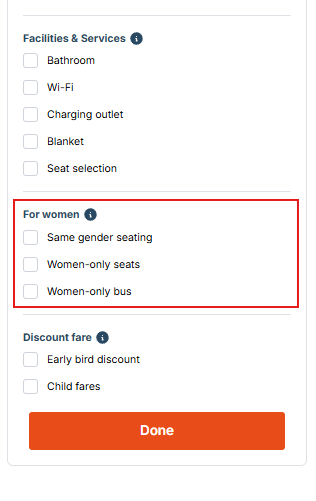
Booking in advance is highly recommended, especially during peak travel periods. Popular routes and holiday dates (e.g. Golden Week in early May, Obon in mid-August, New Year’s) can sell out weeks or even months ahead. To secure your seat, reserve online as early as possible. Using an English-friendly booking platform like Japan Bus Tickets makes this easy – the interface is in English (and other languages), and you can compare schedules, seat types, and prices all in one place. Online booking also allows you to pay by credit card and receive an e-ticket by email, so you don’t have to navigate a Japanese ticket machine or counter. (On the day of travel, just show the ticket on your phone or a printout when boarding.)
Using an online booking site like Japan Bus Tickets, you can search routes (for example, Tokyo to Osaka) and choose from various overnight bus options easily.
When choosing your bus, pay attention to departure and arrival points. Most Tokyo-originating night buses depart from major terminals such as Busta Shinjuku (Shinjuku Expressway Bus Terminal) or the Tokyo Station Yaesu highway bus terminal. Some buses might have additional pickup points (like Ikebukuro or even Tokyo Disneyland), so double-check your boarding location and be there at least 20–30 minutes early. Similarly, confirm where you will get off – usually it’s a central bus terminal in the destination city, but not always right at the main train station. The booking site or ticket should list the exact drop-off stop. It’s a good idea to look up that location on a map beforehand so you know how to get to your accommodation or next activity after you arrive.
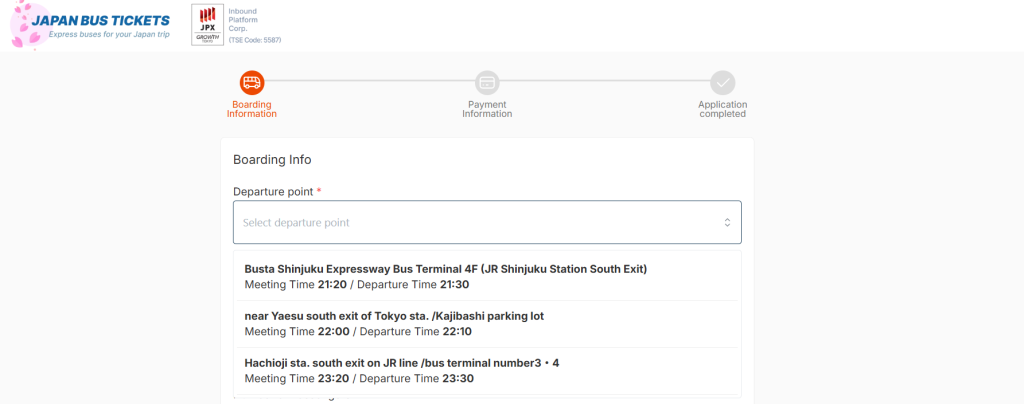
Finally, note that ticket prices can vary by date and bus class. Overnight bus fares work a bit like airline tickets: weekends and holidays are pricier, mid-week is cheaper, and buying early can snag “hayauri” discounts. As a rough range, a Tokyo–Osaka night bus might cost as low as ¥3,000–¥4,000 on a off-peak day if you book early, whereas a last-minute ticket during a peak holiday could be ¥8,000+ for the same route. Higher-grade buses with luxury seats will also cost more. Even so, most overnight bus tickets between major cities tend to be in the ¥4,000–¥6,000 range, which is still significantly cheaper than the bullet train.
Packing Essentials for a Night Bus Trip
A little preparation goes a long way toward making your overnight bus Japan trip more comfortable. Here are must-bring items for a smooth ride:
- Neck pillow & eye mask: A U-shaped pillow supports your head and prevents stiffness, while an eye mask blocks light. Buses dim the lights but may not be fully dark until around 11 p.m., so having your own mask is helpful.
- Earplugs or headphones: Engine hum or snoring can disturb sleep. Earplugs or noise-canceling headphones help, but keep the volume low to avoid bothering neighbors.
- Light blanket or jacket: Air-conditioning can make buses chilly. Since some companies no longer provide blankets, bring a compact travel blanket or layer up with a hoodie or jacket.
- Comfortable clothing & slippers: Wear loose-fitting clothes like sweatpants or stretchy jeans. Easy-to-remove shoes or foldable slippers keep your feet comfortable; some buses provide disposable slippers, but having your own is better.
- Snacks & water: Carry a bottle of water and light snacks such as onigiri or crackers. Avoid strong-smelling food, and skip alcohol to improve your sleep quality. If needed, service area stops offer vending machines and convenience stores.
- Toiletries & face mask: A toothbrush, toothpaste, face wipes, and deodorant will help you freshen up in the morning. Larger stations often have restrooms, and some even have coin showers. A face mask is useful for comfort and courtesy.
- Chargers & entertainment: Many buses have USB or power outlets, but bring your own cable and power bank. Download music, movies, or books in advance, though you may just sleep the entire way.
Keep essentials in a small bag at your seat. Larger luggage is stored underneath, but always keep valuables with you.
Onboard Etiquette and Comfort Tips
Once you’re seated, remember the Japanese concept komaranai you ni—“don’t bother others.” A few simple habits make the ride pleasant for everyone.
- Buckle up: Highway buses require seatbelts by law. It won’t affect your comfort and keeps you secure if the bus brakes suddenly.
- Recline politely: Most passengers recline to sleep. Adjust your seat slowly, checking behind you first. Use the leg rest or privacy curtain if provided, but be considerate of others’ space.
- Observe quiet hours: Lights usually go off between 11 p.m. and midnight. Avoid bright screens, phone calls, or loud music after this. Keep conversations brief and quiet—think “shared dorm at night.”
- Be mindful with food: Eating and drinking are allowed, but skip strong-smelling or noisy snacks. No smoking is permitted, and avoid heavy perfumes or colognes.
- Use rest stops wisely: Every 2–3 hours, buses stop for 10–15 minutes at service areas. Stretch, use the restroom, or grab a drink, but return on time—the bus won’t wait. Set a phone alarm if you’re sleepy, and note your seat number so you re-board correctly.
- Stay comfortable: Settle in with your neck pillow and blanket or jacket. Draw curtains to block light and wear earplugs to reduce noise. If sleep doesn’t come immediately, listen quietly to music or an audiobook. The gentle hum of the bus often lulls passengers to sleep.
- Follow staff instructions: Even without Japanese, you can understand basic signals or simple English. Watch how other passengers behave, especially before and after lights-out.
By keeping noise, light, and scents to a minimum and respecting others’ comfort, you help create the quiet, restful atmosphere that makes night bus travel in Japan enjoyable for everyone.
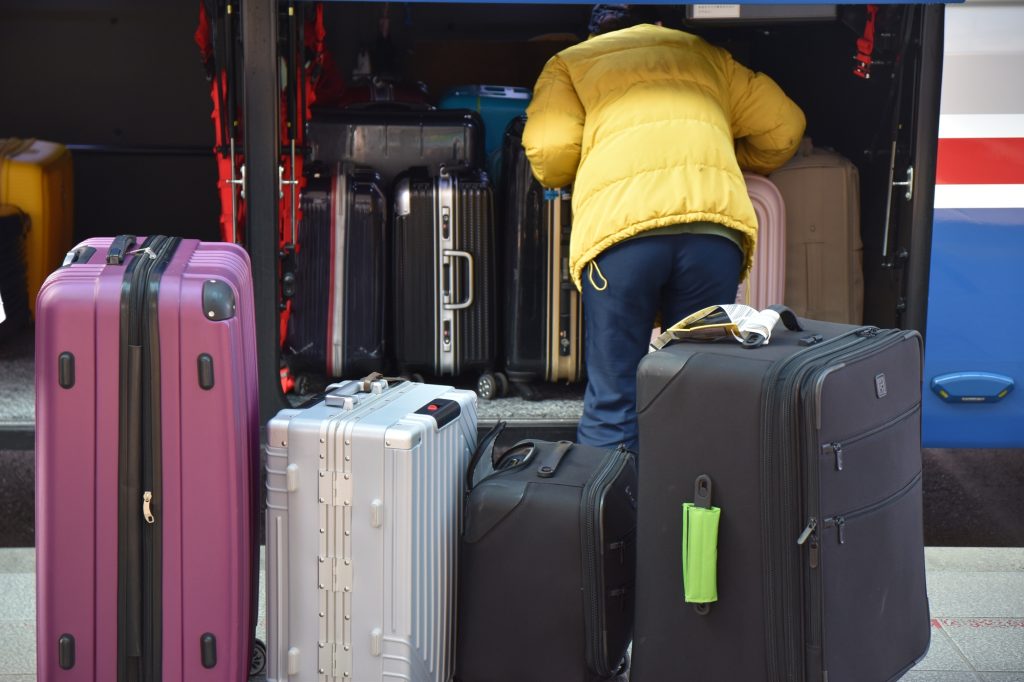
Arriving at Your Destination in the Morning
One of the joys of overnight bus Japan travel is waking up in a new city, ready to start your day. As you approach your destination—often between 5 a.m. and 7 a.m.—the driver may gently wake passengers with soft lights or a chime. For example, many Tokyo–Osaka buses arrive around 6–7 a.m. Before leaving, check around your seat for belongings and thank the driver with a polite “arigatō gozaimasu.”
Because hotels may not allow check-in this early, make the most of your morning with these tips:
- Freshen up: Large bus terminals and nearby train stations have restrooms for washing up and brushing your teeth. Some even offer coin-operated showers or 24-hour cafés where you can relax and recharge. A quick wash and change of clothes can boost your energy.
- Store your luggage: Most major stations have coin lockers in various sizes. For a few hundred yen, you can store bags until check-in, leaving you free to explore without carrying heavy luggage.
- Enjoy breakfast like a local: Early arrivals mean first access to bakeries, cafés, and 24-hour eateries. In Osaka, for example, you might find a cozy café serving pastries and coffee from 7 a.m., or a soba shop offering a steaming bowl of noodles.
- Plan a light morning itinerary: Start with something easy, such as a park stroll, an early temple visit, or browsing a morning market. By mid-morning, you’ll be ready for busier attractions. If you’re tired, plan a rest stop later in the day.
Traveling overnight means you’ve saved both time and money. Many travelers drop bags, grab breakfast, and head straight to sightseeing. Before leaving the terminal, return any borrowed items and, if needed, ask staff for directions—they’re often happy to help in simple English.
Final Thoughts
Overnight bus travel in Japan can be a surprisingly comfortable and rewarding experience when you come prepared. By choosing the right bus (with a seat that suits your comfort needs), packing smart, and observing common courtesy on board, you’ll increase your chances of actually getting some sleep as the miles roll by. Thousands of visitors and locals alike use night buses every week to hop between Tokyo, Kyoto, Osaka, Hiroshima, and more. It’s not just about saving money (though the savings are great); it’s also about maximizing your adventure by traveling while you snooze.
If you’re a first-time visitor or have never tried an overnight bus before, don’t be nervous. Japan’s highway bus system is well-organized, punctual, and foreigner-friendly. Give it a try on your next trip – you might find it’s an efficient and even fun way to journey across the country. With these tips in mind, you’re set for a comfy ride. Sweet dreams on the road, and enjoy your morning in your next destination!

